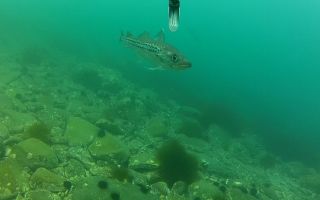Content
- 1 What is this fish
- 2 Chemical composition of pollock
- 3 How many calories are in pollock
- 4 Useful properties of pollock
- 5 At what age is pollock possible for children
- 6 Pollock for weight loss
- 7 Pollock caviar: benefits and harms
- 8 The benefits and harms of pollock liver
- 9 What is the difference between pollock liver and cod liver
- 10 How to cook pollock
- 11 How to choose the right pollock
- 12 How to store pollock
- 13 Potential harm to fish and contraindications
- 14 Conclusion
- 15 Reviews about pollock
Disputes about how much fish is needed by the human body do not cease. Most have such a rich composition that no other product can replace it. These types include pollock. Below, using the facts, we will determine the benefits and harms of pollock. The latter is conditional and easily regulated.
What is this fish
This is one of the most famous commercial fish. To be sure, it is enough to look at the fish departments of any store. Like all representatives of the cod order, it is found in the waters of the Pacific Ocean, especially in its northern part.
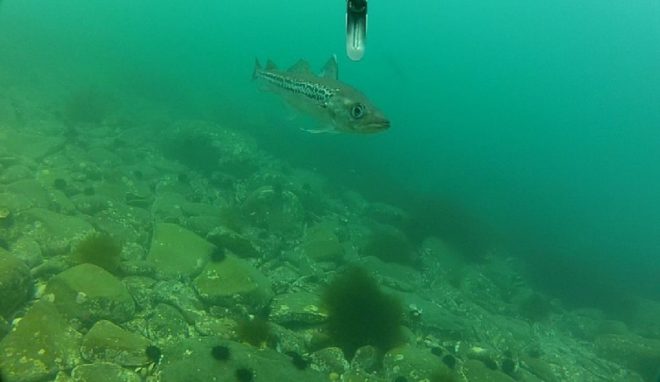
It is known that the habitat and nutrition affects the taste and chemical composition of fish. Growing up, it consumes various planktonic crustaceans. These include larvae, protozoa, crustaceans and molluscs. Growing up, individuals of this species begin to look for larger prey: small fish and squid.
Chemical composition of pollock
It is considered not only tasty, but light and healthy food. This is confirmed by the chemical composition and the ratio of proteins, fats and carbohydrates. There are practically no carbohydrates in this form, there is a very small amount of fat - 0.9 g per 100 g of product.
Protein, as in any other animal food, is enough - 15.9 g per 100 g. 500 g of pollock provide the daily protein requirement of an adult. Considering the price, it is one of the most affordable sources of this element.
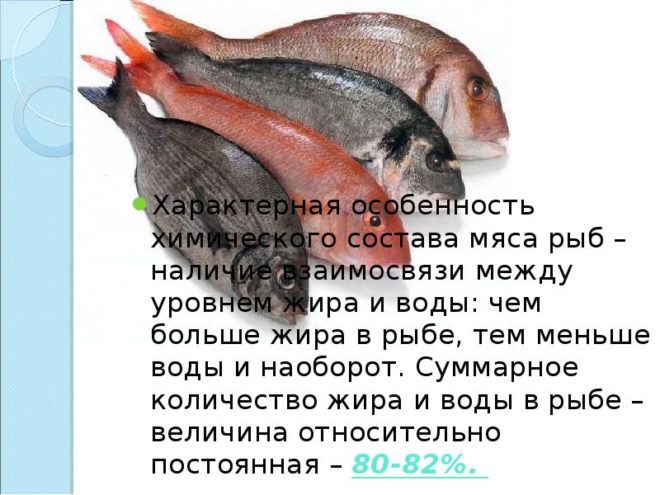
It contains vitamin A, E, the entire group B. But most of all - vitamin PP. Of the macronutrients, pollock is especially rich in phosphorus (100 g 30% of the daily value), potassium and magnesium. Some trace elements are simply found in huge quantities. As a percentage (of the daily value), 100 g contains:
- iodine - 100%;
- cobalt - 150%;
- chrome - 110%.
Pollock has a high content of unsaturated fatty acids. Omega-3 fatty acids in 100 g contains more than 20% of the daily value.
How many calories are in pollock
Pollock is one of the most popular fish species. And not only because of the price. It is healthy, low in calories, and even very complex dishes can be prepared from it. Its calorie content changes during heat treatment. Much depends not only on the preparation method, but also on various sauces and additives. Mayonnaise, sour cream, cream not only soften the taste, but also add calories.

If you check the calorie content in "pure" form, the results will be as follows:
- fried - 127 kcal;
- boiled - 79 kcal;
- boiled fillet - 72 kcal;
- stewed - 75.5 kcal;
- baked - 77 kcal.
Calorie content may vary. If you fry not in flour, but in batter, then the calorie content will increase to 145 kcal. Stewed pollock is non-calorie, and if stewed with vegetables, its nutritional value will drop to 50 kcal. But if you add cheese, then, depending on its type and quantity, the nutritional value can increase to 100-120 kcal.
Useful properties of pollock
The beneficial properties are due to the low calorie content, the complete absence of carbohydrates and the presence of unsaturated fatty acids. This fish also contains several essential micro and macro elements. In terms of the content of some vitamins, pollock also occupies not the last place.
The benefits of pollock for women
It is especially useful during puberty in adolescent girls and menopause in women. Pollock is prized as a source of unsaturated fatty acids, especially Omega-3 polyunsaturated fatty acids. Its use slows down the aging process and improves metabolism.
The use of this fish is beneficial for the female nervous system, it contains a sufficient amount of vitamin B. A huge amount of iodine also has a beneficial effect on the nervous, and also on the endocrine system. With its help, the hormonal background in women is normalized.
Pollock during pregnancy and breastfeeding
Pollock is recommended for a nursing mother and for pregnant women. It actually replaces fish oil, and there is no danger of overdose. Its use will reduce the risk of developing cardiovascular disease, as well as cholesterol levels.

It contains a whole complex of vitamins and minerals that complement each other and participate in metabolism. It is known that people who eat fish in large quantities have a well-functioning reproductive system. Also, there are no patients with atherosclerosis and cardiovascular diseases among them.
Why is pollock useful for men
As an easily digestible protein food, this type of fish is useful for hard physical work, intense workouts in the gym, and muscle wasting. However, it does not contain carbohydrates and very little fat, which does not pose a problem of excess weight. Its positive effect on potency is known.
B vitamins and cobalt strengthen the nervous system. The latter is also very important for the development of the circulatory system. The high content of cobalt, chromium and iodine makes it possible to strengthen your immunity. Iodine is important for the prevention of endocrine system problems, especially with the thyroid gland.
At what age is pollock possible for children
All cod fish, especially pollock, are low in fat and calories. At the same time, they contain a lot of protein, which is necessary for a growing body. Fish puree is recommended to be given to babies from 8 months of age as an additional food for breastfeeding. In addition to protein, pollock contains a lot of iodine, cobalt and chromium. Even 1 tablespoon of puree will provide the daily need of the child's body for these trace elements.
Pollock or its fillet is best suited for this, as a low-allergenic product. You need to introduce complementary foods gradually. First, the child is given ¼ teaspoon of puree, then the amount is gradually increased. For mashed potatoes, it is better to use fillets. Or, alternatively, carefully check for bones in the fish.
Children under 3 years old are not given fried fish. The healthiest cooking method for a child aged 8 months to 3 years is steamed fish without salt. By the way, such a dish will be useful not only for children, but also for parents.
Stewed pollock with vegetables with a small amount of fat can be given to children from a year old. Also, the child can cook fish baked in foil or sleeve. Of course, without sauces and additives. Such a dish can be introduced into the diet of a child from one and a half years old.
Pollock for weight loss
Pollock when dieting is just a godsend. Low-fat, complete lack of carbohydrates, but high in proteins and amino acids. This fish contributes not only to weight loss, but also to the health of the body as a whole. Due to the high content of vitamins and microelements, it can be recommended even to sick people.
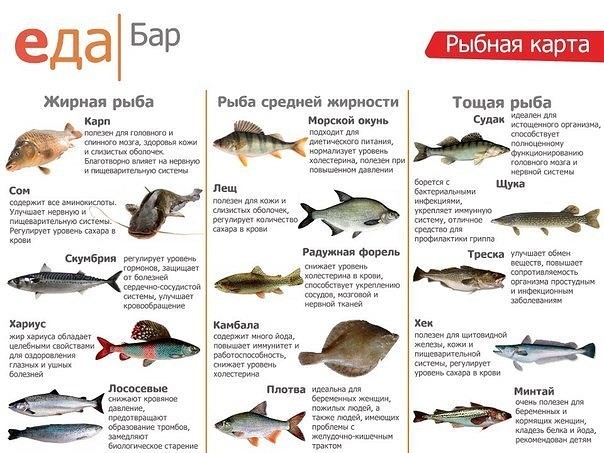
In order to lose weight, you need to choose only those cooking methods that use a minimum of fat. For those who want to have a beautiful figure, we can recommend steaming pollock, baking it in the oven with vegetables, and stewing. For dietary meals, you should avoid using spices and spices, from which a strong appetite and thirst appears. Is it better to use fillet or whole fish?
Each type has its own pros and cons. Fish with bones contains more nutrients, and the benefit of pollock fillet is that it is less fatty and high in calories, which is just right for losing weight.
Pollock caviar: benefits and harms
Caviar is one of the most common fish delicacies. Let's see how useful it is. Like the fish itself, it contains a lot of protein. True, there is much more of it in caviar, 28.3 g, which is two times higher than in fillet. In this, it falls short of the indicators of the famous red caviar, but in terms of fat content, on the contrary, it is healthier.
Its low fat content allows it to be recommended even with a diet. It is a full-fledged source of vitamins, macro- and microelements, but, unfortunately, it is almost impossible to buy fresh caviar.

The stores mainly sell the canned version. Even high-quality canned food is "rich" in excess of salt and preservatives. In addition, many cans of caviar have recently appeared on the shelves, where the percentage of content to the total weight is less than 50%. Rest: water, thickeners, flavors. Eating such "caviar" is not only not useful, but also harmful to the body.
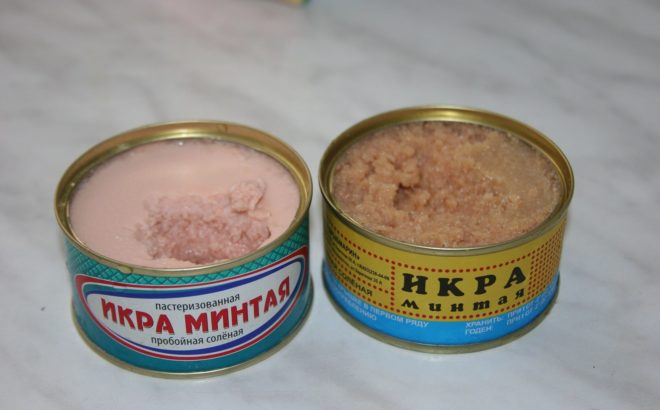
The benefits and harms of pollock liver
The liver of all cod fish is very useful. It includes:
- proteins (18 g in 100 g of the liver);
- Omega-3 polyunsaturated fatty acids;
- vitamins A, D, C, group B, PP;
- iodine, phosphorus, potassium, chromium, manganese, fluorine.
In the pollock liver, unlike the fish itself, there is a lot of fat, 40 g per 100 g of the product. But mostly these are useful unsaturated fatty acids that are not produced by the human body and must be ingested with food.
But the benefits of canned pollock liver depend on the quality of canned food. If it is cooked whole, and from additives only salt and vegetable oil, then it can be safely recommended as a source of proteins, vitamins and healthy fats.
What is the difference between pollock liver and cod liver
Pollock liver or cod liver differ not only in price. The calorie content of cod liver is higher, 613 kcal, and pollock - 432. The protein in the liver of pollock is 4.5 times more - 18 g per 100 g of product, in cod - 4.2 g. They are equal in carbohydrates, but the fat in the cod liver almost one and a half times more: 65.7 g versus 40 g for pollock.
Indicators for vitamins and microelements are almost the same. So, the choice between these products is simple: whoever needs protein more, chooses pollock liver, in Omega-3 acids - cod.
How to cook pollock
The benefits of boiled pollock are known to everyone. This is only 79 kcal, and when boiling fillets - 72. Only steamed fish is healthier than this dish. It is easily digestible, non-allergenic, there is almost no fat in it, but there is protein.
Fried pollock is not so healthy, but very tasty. Sometimes you can pamper your family and cook fish in batter, in sour cream or mayonnaise sauce and with cheese.
How to choose the right pollock
The freshness of the fish is judged by its gills, so it is desirable that the pollock be with its head. If the gills have a pink tint, then the fish can be taken without fear. The scales should be slightly shiny, without dark spots.
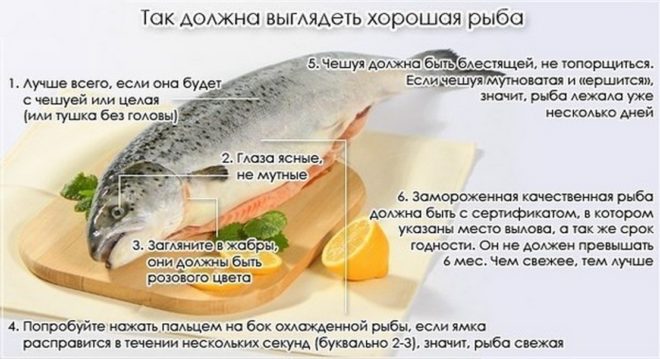
Fresh frozen fish retains most of the nutrients when it is frozen at the catch site and is delivered to the store without thawing and re-freezing. In this case, the fewer intermediaries, the better. Therefore, you need to buy fish from large supermarkets.
How to store pollock
If you do not plan to cook from freshly frozen fish on the same day, then from the store it should be immediately sent to the freezer. Defrost it before cooking. This should be done gradually.It is best to first place it in the refrigerator for 12-14 hours and only then defrost it at room temperature.
Potential harm to fish and contraindications
Certain types of fish are allergic and should be eaten with care. In pollock, such qualities were not noticed, it is recommended even for children. Another possible harm is the content of harmful substances in fish due to nutrition (farm, etc.). Alaska pollock feeds on plankton, so there are no harmful impurities in its meat. The only real fact: it contains a lot of salts, so it should be eaten carefully by those who have contraindications.
Conclusion
What are the benefits and harms of pollock, numerous facts say. Objectively, pollock can be called one of the cheapest and most useful fish species. There are very few contraindications to its use, but there are much more recommendations.


